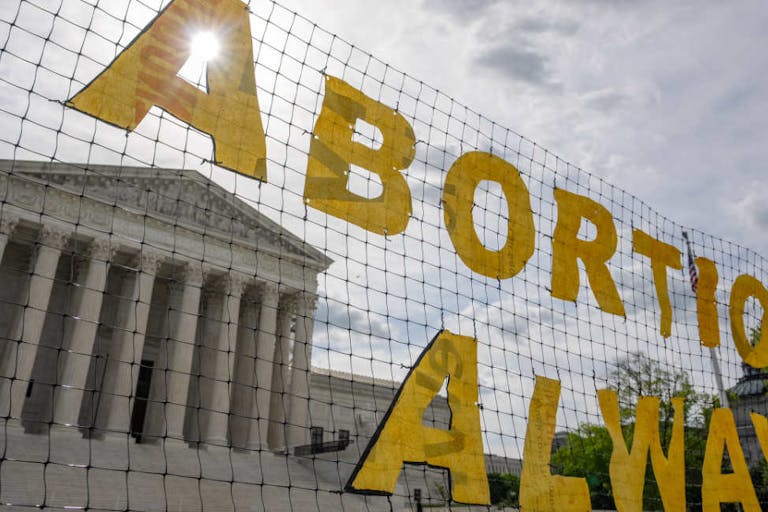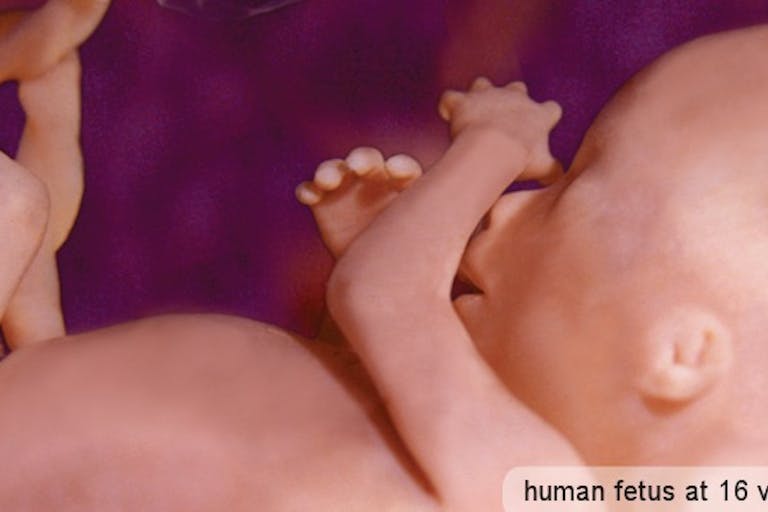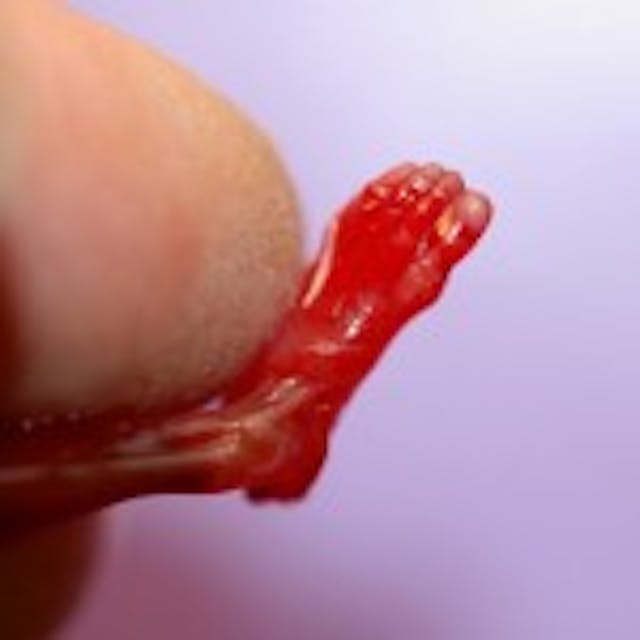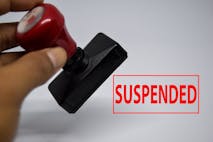
A growing number of Americans call themselves ‘pro-choice’ – but what’s really behind it?
Nancy Flanders
·
Abortionist describes aborted child as ‘material that once was living, but now is not living’
Abortion clinics operate every day in the United States, suctioning and tearing preborn babies out of their mother’s wombs. What happens to the bodies of aborted babies after they are killed?
Ideally, the remains of aborted babies are sent to a lab. They are then examined to make sure there are no serious medical problems that the woman should be made aware of. In very early abortions, the tiny embryo’s remains can be difficult to identify. Often, it takes careful examination by a pathologist to make sure all parts of the baby and placenta have been removed. A thorough examination of aborted remains at these early stages can also rule out a life threatening ectopic pregnancy.
Pathologists have discussed the horrors of being forced to examine the bodies of babies that were aborted at different stages of development.
Sending baby body parts to a lab to be inspected and dissected is expensive. In order to cut costs, some abortion facilities have been known to throw the remains out in the trash. Of course, this leaves the abortionist liable to legal penalties in some (but not all) states. State laws vary, but the “danger” of pro-lifers finding the aborted babies and displaying or burying them is a real threat. Monica Miller of the pro-life group Citizens for a Pro-Life Society has published entire galleries of photos of babies whose aborted remains were found in the trash outside abortion clinics. In her book, Abandoned, Miller describes in vivid detail stories of discovering the bodies of aborted babies in a dumpster outside one abortion clinic.
Disposing of aborted babies is an issue for many clinics. Former abortionist Susan Poppema, who once performed abortions up to 16 weeks in her Seattle clinic, is now a writer at RH Reality Check. She discusses a solution to the problem in her book Why I am an Abortion Doctor:
Realistically, the best and safest way medically to dispose of tissue from the uterus is to put it directly into the general sewage system. Waste of every kind, after all, eventually winds up being disposed of in one manner or another, and short of sacred burial rites, it is safe to say that disposal of organic matter (which uterine tissue is) is generally a fairly straightforward proposition. The matter leftover from surgery is all natural tissue and blood. Could it be infected? Yes.
She says despite this, fetal parts in the sewer will not make anyone sick:
So the disposal of human tissue differs not at all from the disposal of any other material. But the obvious problem is presented when considering that the larger pieces of tissue can block disposal pipes.
Yes, those blasted arms and legs can get stuck in the pipes. This is a problem. What is an abortionist to do?
The answer? Purchase a special garbage disposal unit for the clinic. That should take care of the problem.
Poppema describes what happened when she hired a plumber to install an industrial strength garbage disposal:
…The plumber we asked to come and install a disposal system on our premises…went into the room and went to work. But before the work was finished, my colleagues and I found the poor man on the floor literally sobbing at the thought of a disposal system at an abortion clinic.
The worker was unable to continue. Later, he reported them, and health department got involved. Poppema was indignant, perhaps because she had already gone though the expense of having the disposal installed (a pro-choice woman completed the installation)
Poppema goes on to say:
He [the plumber] might have taken the trouble to ask us….We could then have said to him: “Here, this is a bowl of tissue that has resulted from an abortion operation. It’s tissue not unlike the stuff leftover from any operation. It contains organic material that once was living but now is not living. It was tissue contained in a woman who made a conscious decision that she no longer wanted this tissue in her body. You can feel free to regard this tissue any way you choose. But the fact remains that you have no claim to the tissue, and neither does anybody else in the world except the one woman who was pregnant but who chose not to be pregnant anymore.
So it’s as simple as that. Only the woman who aborted her baby should be concerned with how the baby is disposed of. One wonders, however, if Poppema told her patients that their babies would ideally be ground up in a disposal and flushed away into the sewers.
Remember that Poppema performed abortions up until the 16th week, the same age as the baby pictured at the top of this article. At 16 weeks, the baby is fully formed with arms, legs, hands, and fingers with fingerprints on them.

The leg and foot of an aborted baby at sixteen weeks (at left) shows how developed these children are. This is what the “tissue” Poppema discusses looked like.
Source: Susan T. Poppema, M.D. and Mike Henderson. Why I am an Abortion Doctor (New York: Prometheus Books, 1996) 162-166
Live Action News is pro-life news and commentary from a pro-life perspective.
Contact editor@liveaction.org for questions, corrections, or if you are seeking permission to reprint any Live Action News content.
Guest Articles: To submit a guest article to Live Action News, email editor@liveaction.org with an attached Word document of 800-1000 words. Please also attach any photos relevant to your submission if applicable. If your submission is accepted for publication, you will be notified within three weeks. Guest articles are not compensated (see our Open License Agreement). Thank you for your interest in Live Action News!

Nancy Flanders
·
Investigative
Carole Novielli
·
Investigative
Cassy Cooke
·
Investigative
Carole Novielli
·
Investigative
Carole Novielli
·
Investigative
Carole Novielli
·
Guest Column
Sarah Terzo
·
Abortion Pill
Sarah Terzo
·
Guest Column
Sarah Terzo
·
Guest Column
Sarah Terzo
·
Guest Column
Sarah Terzo
·